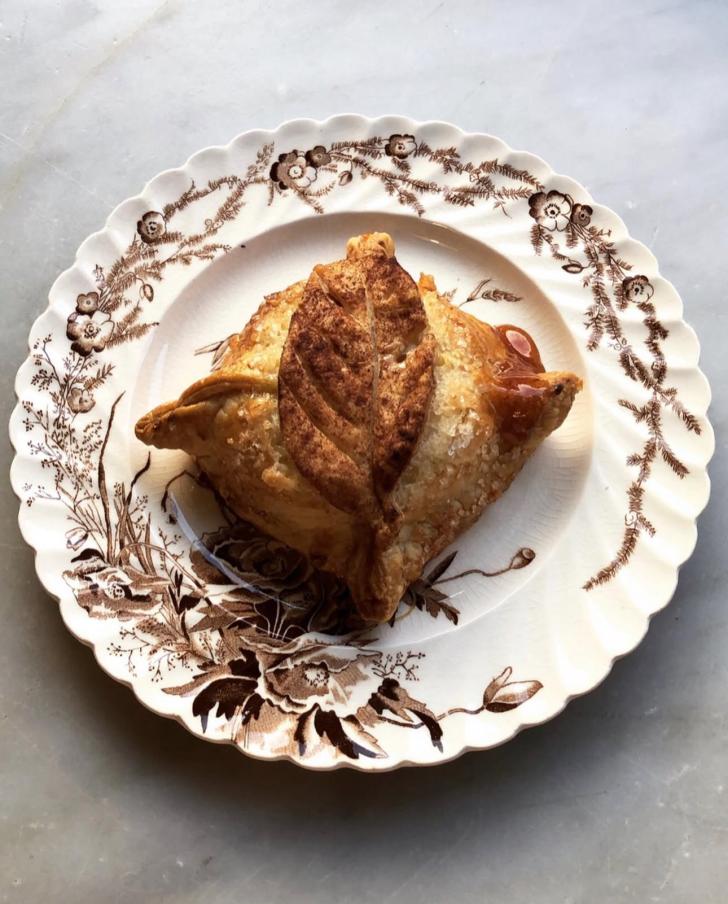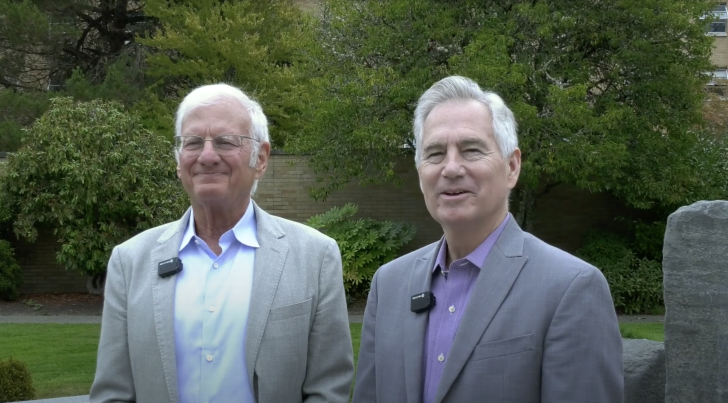Create Your Own Forest Garden with These 5 Plants
Published
The next time you look at your yard or container garden and think there just isn’t enough room to grow any more, get out your hiking boots and take a lesson from Mother Nature.
Notice how in a forest the entire area is full of life, from the tops of the trees down the climbing vines to the bushes and shrubs, then even lower to herbs and ground cover.
If Mother Nature can do that, why can’t you?
That’s one of the ideas behind Bastyr University’s Certificate in Holistic Landscape Design, which focuses on using every available space to grow medicinal and edible plants.
“We are trying to imitate nature because in the natural systems there is no waste,” says Jenny Perez, BS (’05), who developed the certificate program and teaches the medicinal and edible plants series. “Everything serves multiple functions.”
The program is grounded in the concept of “permaculture,” the integration of design and ecology for the benefit of people and the planet. The principles of permaculture can be applied as a guide for building natural homes, growing food, restoring diminished landscapes and building communities that mirror the surrounding natural environment.
The philosophy behind permaculture is one of working with, rather than against, nature.
Want to give it a try in your own garden? Perez suggests creating your own "forest garden" by starting with a "plant guild," a small area you can fill with plants that support the health of a central tree or shrub.
It All Starts with an Apple Tree
“In the Holistic Landscape Design program, you learn how to create planting systems that take care of themselves,” says Perez, who has been manager of the Bastyr Medicinal Herb Garden for six years.
For instance, if you have an apple tree in your yard, chances are you’re like most people and haven't put a lot of thought into what grows underneath its canopy. Grass, perhaps, or some decorative flowers?
Instead, Perez invites you to create your own little permaculture system by adding plants directly beneath the tree that would work to benefit one another.
Red Clover: The Nitrogen Fixer
One of the first steps is to plant a “nitrogen fixer” such as red clover (Trifolium pratense), which takes nitrogen from the air and adds it to the soil, giving your forest garden the nitrogen it needs to stay green and lush. But that’s not all you can count on red clover for.
The ground cover also attracts pollinators, which are necessary to fertilize your plants, and its leaves and flowers are edible and medicinal.
“The young leaves and blossoms are nutrient-rich and can be eaten in salads or infused in vinegar,” Perez says.
We Love Chives, But Pests Don’t
While red clover attracts pollinators and fixes nitrogen, chives (Allium schoenoprasum) will help your tree by repelling pests such as apple scabs and apple maggots.
Hopefully the scent doesn’t deter you, too, because the same sulfur-rich smell that drives away pests also gives chives some of its antioxidant and detoxification properties when we ingest them.
And don’t forget their beauty: Just as they serve as an enticing garnish to almost any savory dish, chives also will complement your forest garden with their tall green leaves topped with spicy but edible lavender flowers.
Keep Out Weeds with Comfrey
Need to keep grass and weeds out of your new forest garden? Perez recommends planting a ring of comfrey (Symphytum officinale) underneath the outer edge of your tree’s circumference, or the drip line. The perennial’s deep taproot pulls up nutrients most roots can’t reach, giving it mineral-rich leaves that can be used throughout the growing season as mulch.
But don’t mulch it all! Your tree guild also can benefit from comfrey leaf tea, a natural fertilizer or foliar feed that will provide your plants with sufficient amounts of nitrogen, phosphorous and potassium.
The dried leaves also can be used therapeutically. Infused in olive oil, comfrey can be used topically to heal broken bones, sprains and strains, or the infused oil can be added to face creams or salves as a healing agent for minor scrapes.
Wild Yam Adds a Vertical Layer
Although we most often think of plants on a horizontal plane, permaculture also takes advantage of plants that can soak up the sun vertically, such as vines and climbers.
Consider adding shade-tolerant wild yam (Dioscorea villosa or Dioscorea opposita) to your forest garden, which will provide you with edible tubers in the fall and a beautiful climbing vine in the summer.
“It’s a very feminine-looking plant,” Perez adds. “Its leaves and flowers are just beautiful.”
What's Different About Bastyr's Permaculture Certificate Program?
If you’d like to see how a forest garden works on a much larger scale, it doesn’t get much better than what Perez calls Bastyr’s “51-acre classroom” for the Certificate in Holistic Landscape Design program.
Between the medicinal herb garden and the forests that line campus, students have the opportunity to gain hands-on experience creating plant guilds and forest gardens while also observing self-sustaining medicinal and edible plant systems in nature.
Classes are taught weekends to cater to busy professionals or students, and the one-year full-time or two-year part-time program offers a much more in-depth view of both permaculture principles and design strategies compared with the standard 72-hour permaculture design certificates, many of which take place over a two-week period.
“In a two-week class, there’s no time to observe what happens through the seasons,” says Perez, who received her certificate in such a class. “When I received my certificate, there was so much more I wanted to know, but could only be achieved by a four-season approach to observe the results of what worked or didn’t work in a planting design. I felt strongly about this being a crucial approach and attribute to integrate into the Holistic Landscape Design program.”
Bastyr’s program also has a bigger focus on growing medicinal plants, complementing the other natural health disciplines offered at the University.
“In this certificate program, we go full circle to the roots of natural medicine, focusing on medicinal and edible plants — or ‘medibles,’ as I like to call them,” Perez says. “Through the integration of permaculture principles and practices with those of biodynamic agriculture, and a deeper understanding of the soil-food-web, you’ll learn the tools and skills necessary to reconnect people back to nature in their very own back yard.”
Cultivating these skills is a way to be part of the grass-roots approach to changing the face of health care — where food is medicine and your garden is your apothecary.


